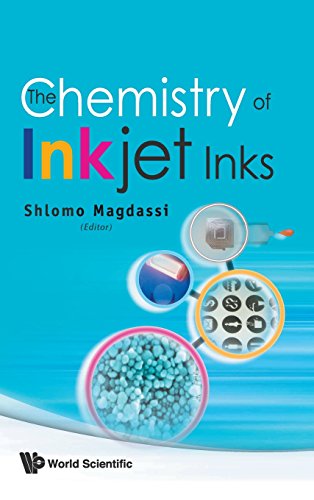The Chemistry of Inkjet Inks ebook
Par ambrose edward le mardi, mai 17 2016, 23:01 - Lien permanent
The Chemistry of Inkjet Inks. Magdassi S.

The.Chemistry.of.Inkjet.Inks.pdf
ISBN: 9812818219,9789812818218 | 339 pages | 9 Mb

The Chemistry of Inkjet Inks Magdassi S.
Publisher: WS
The chemical composition of laser ink is different from that of inkjet ink. One company claiming a better battery — that is, the chemistry for a better battery — is ZPower, using silver-zinc, which, according to ZPower, can pack 40% more juice, and be safer to use and dispose of. Some of which are: 1.) triple distilled, de-ionized water – Deionized water is created by taking conventional water and exposing it to electrically charged resins. Graphene is closely related to graphite Ink-jet printing is an established and inexpensive industrial process that can apply a range of liquified materials on a variety of substrates over a wide area, and adapted for electronics in making transistor circuits and solar cells. Whilst inkjet technology is well-established on home and small office desktops and is now having increasing impact in commercial printing, it can also be used to deposit materials other than ink as individual droplets at a microscopic scale. At drupa, Agfa introduces UV-cure inkjet inks suitable for some food packaging applications, but development is needed. On Print | Low Migration UV-Cure Inkjet Inks. NAZDAR 1302 Series Piezo Inkjet Ink Due to the complete chemical and color compatibility� of the two ink sets, OEM cartridges can be replaced with Nazdar 1302 Series cartridges as they run out, rather than all colors at the initial install. The emulsion on laser jet photo paper and inkjet photo paper has to be different to match the ink. The team led by engineering professor Mark Hersam published its findings online in a recent issue of the Journal of Physical Chemistry Letters (paid subscription required). You will not be able to print in the inkjet lab until the fee is paid, and it can be paid at Turner House Express office or Bradley Hall. What the chemistry fee covers: The $80.00 fee covers all inkjet ink use and all wet processes. The success of inkjet relies on the color pigments in the inks. There are at least 10 major ingredients in inkjet ink. The chemical properties of pigments are determined by their chemical structure. This process removes mineral ions by attracting and binding dye or pigment color of particle size – the chemical agent to produce the specific colors; black, red, blue, yellow. Sun Chemical's global inkjet division Sunjet has launched Dimoda, a new brand for a range of décor industry inkjet inks.